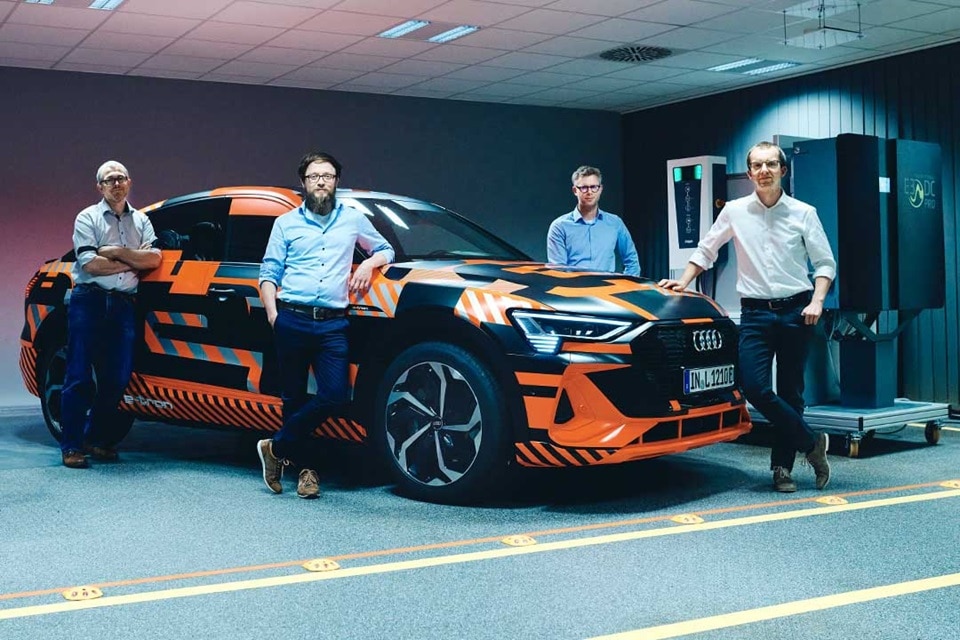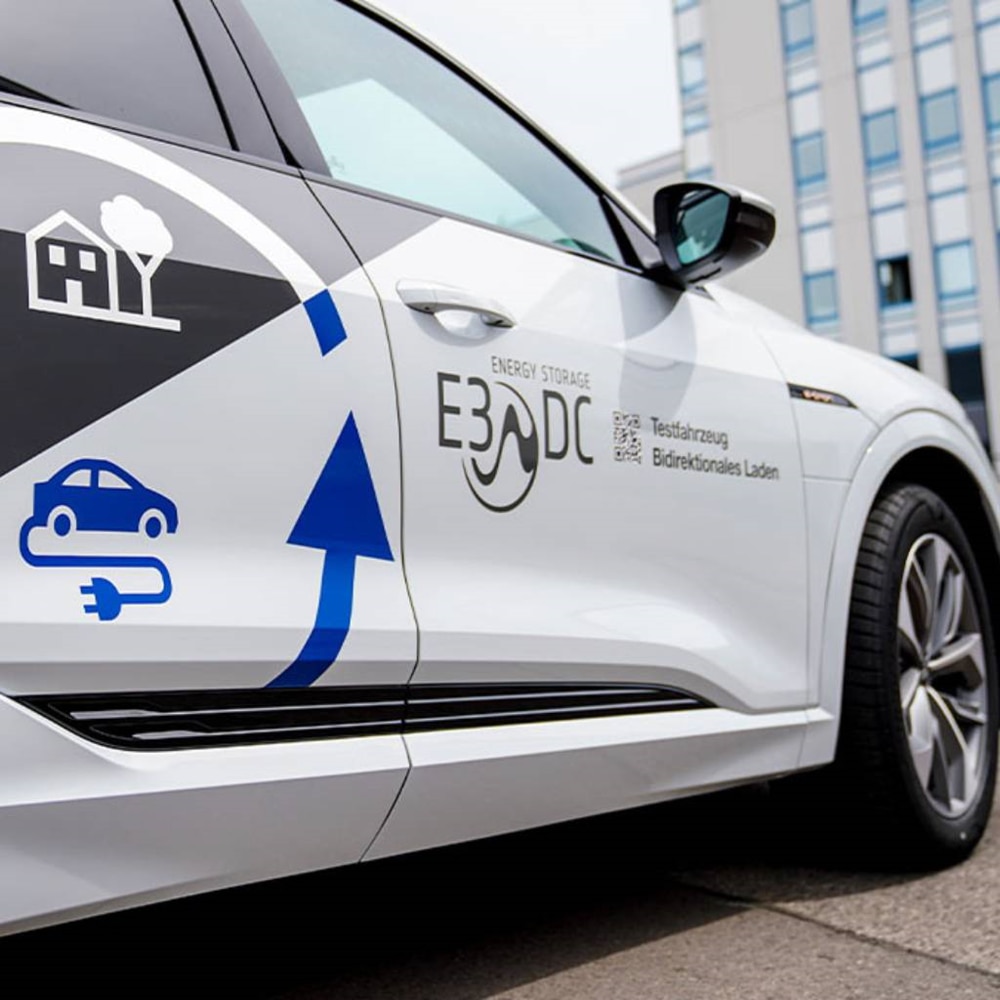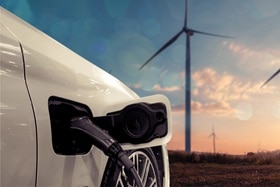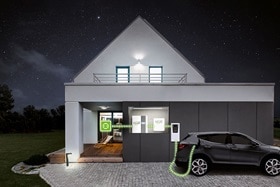Hager Group invests in research project on
e-mobility

Cross-industry collaboration to explore e-mobility and bidirectional charging
Since 2020, Hager Group and Audi AG have been working together on a research project focused on e-mobility and bidirectional charging, also known as Vehicle-to-Home technology (V2H). For the Hager Group, it’s clear that this is where the future of e-mobility lies.
When equipped with bidirectional charging technology, electric vehicles can:
- improve the ecological footprint of their users,
- make renewable energies more readily usable, and
- offer a solution for a world in which electrical energy plays an increasingly important role.
As part of the project, Audi developed a prototype of the fully electric Audi e-tron. Thanks to the bidirectional charging infrastructure from Hager Group, it can now be used for mobile energy storage. The underlying technology needed for this pilot has been perfected over the years thanks to the research done by the home power plant project of Hager Group's E3/DC brand.
Field test to explore bidirectional charging in real-life conditions
As part of a field test, the Hager Group and Audi AG are subjecting this bidirectional charging technology to real-life conditions that test various potential use cases. The aim is to find out how the vehicle battery, charging infrastructure and photovoltaic home storage can work together even better thanks to intelligent controlling of the charging and discharging process. An additional goal is to improve user-friendliness for end users.
The initial focus is on collecting usage data from a single-family home following various "Vehicle to Home" (V2H) scenarios.

In addition to the Audi e-tron prototype, several components from Hager Group's E3/DC brand portfolio have been used in the field trial:
- A commercial home power plant. This already contains a V2H interface as the basis for bidirectional charging, which allows for retrofitting.
- A novel bidirectional DC charging station (DC wallbox).
As part of the field test, our colleagues worked intensively on the software of the home power plant. It was expanded with regard to the bidirectional functions and thus integrated into the existing system.



